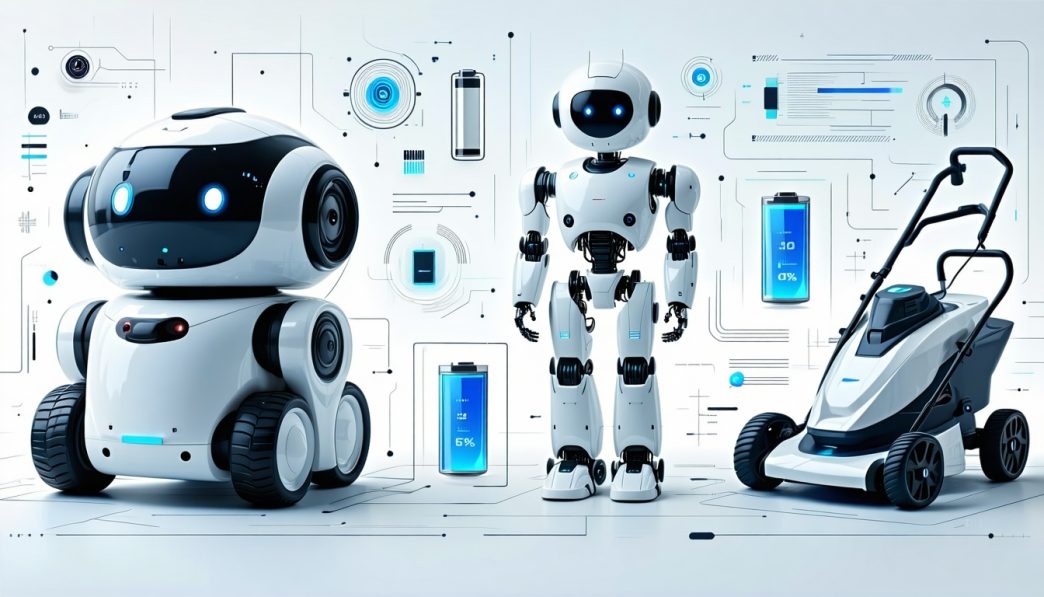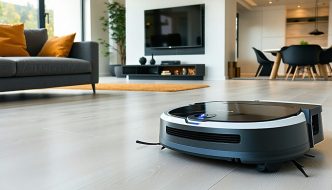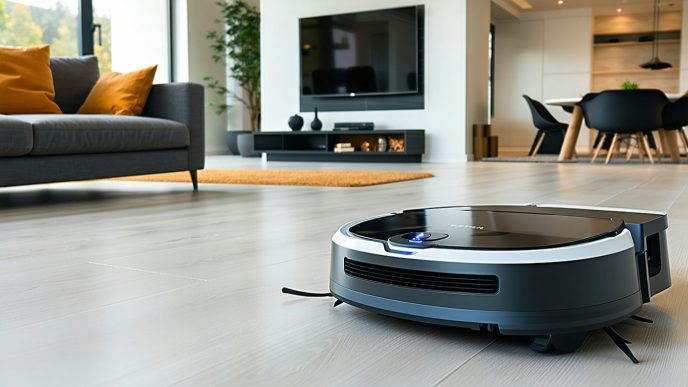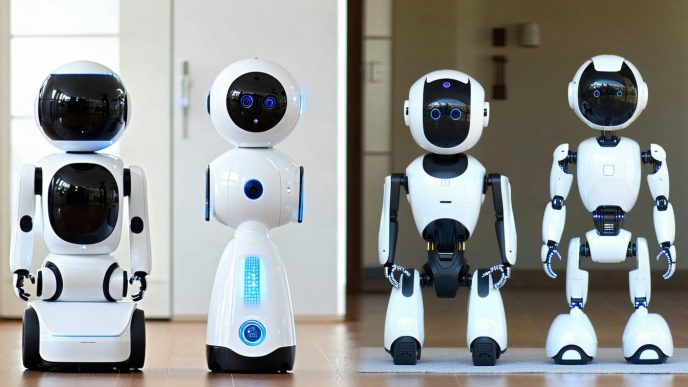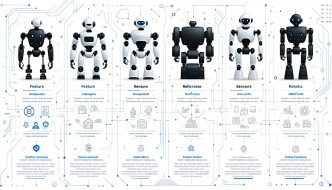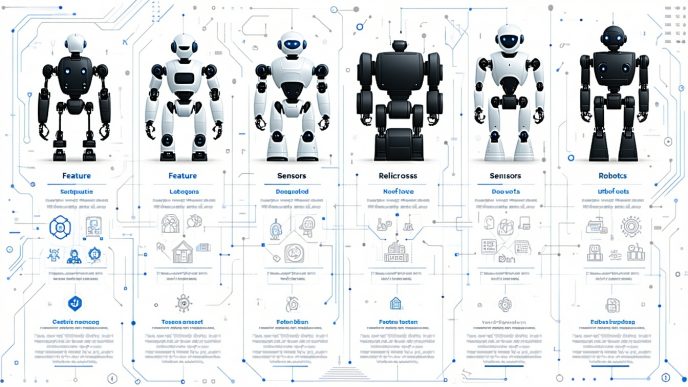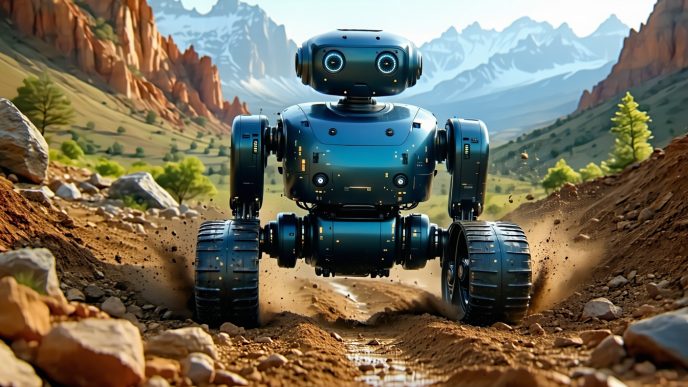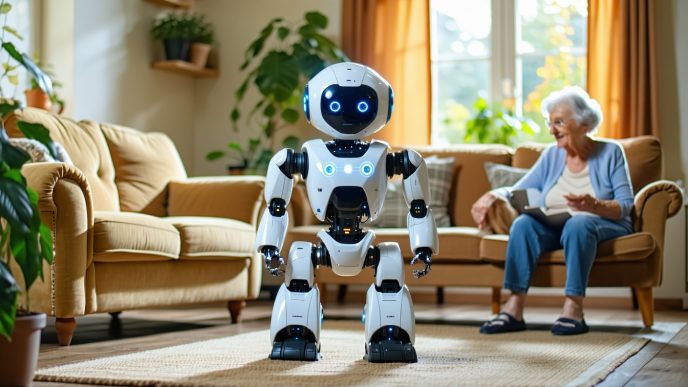Unveiling Long-lasting Robots
Importance of Battery Life in Robots
Battery life is a critical factor in determining the effectiveness and usability of robots. A longer battery life translates to more extended operational periods without needing interruptions for recharging. This is particularly important for applications such as home cleaning, security, and industrial automation where consistent performance is necessary. The demand for efficiency pushes manufacturers to develop robots with advanced battery technologies, making it a central theme in the evaluation of robotic devices.
Reliable battery performance not only enhances user experience but also contributes to the robot’s effectiveness in completing its designated tasks. Factors such as charging time, run time, and the ability to handle various operational loads significantly influence how users perceive the value of a robot. For those seeking the best robot for battery life, understanding these nuances is essential.
Differentiating Robots Based on Battery Longevity
When investigating robots, it’s valuable to differentiate them based on their battery longevity. Robots can be classified into several categories according to their operational durations. Below is a comparative overview of robots categorized by average battery life:
| Robot Type | Average Battery Life | Optimal Use Case |
|---|---|---|
| Cleaning Robots | 60 – 120 minutes | Home cleaning in multiple rooms |
| Security Robots | 120 – 180 minutes | Continuous surveillance applications |
| Industrial Robots | 240 – 360 minutes | Heavy-duty tasks in factories and warehouses |
| Personal Assistants | 60 – 90 minutes | Assistance for daily tasks at home |
This table highlights the general operational capabilities of different robots concerning their battery life. Individuals looking for feature-specific comparisons may find the battery life of a robot crucial when assessing its ability to complete tasks without frequent recharging.
Further insights into specific features can be explored in our articles on the best robot for grasping and manipulation, best robot for navigation and mapping, and best robot for AI decision making. Each category evaluates how battery longevity impacts functionality in distinct areas, helping potential users make informed decisions based on their specific needs.
Evaluating Battery Life
Understanding the battery life of robots is essential to ensuring optimal performance and longevity. Several factors contribute to this, which are crucial for tech-savvy buyers, engineers, and enthusiasts in their quest for the best robot for battery life.
Factors Affecting Battery Life in Robots
Battery life can be influenced by numerous elements, including:
- Usage Patterns: The tasks a robot performs significantly impact its energy consumption. For instance, robots engaged in high-intensity activities typically deplete their batteries faster than those performing light tasks.
- Environmental Conditions: Robots operating in extreme conditions—such as high temperatures or humidity—may experience reduced battery efficiency.
- Weight and Design: Heavier robots often require more energy to operate, reducing battery longevity. Streamlined designs usually enhance battery performance.
- Software Efficiency: The algorithms used to control a robot can affect how effectively it uses power. More efficient coding can lead to longer battery life.
The Role of Battery Capacity and Type
The capacity and type of a battery directly relate to its lifespan and performance in robots. Key considerations include:
- Battery Capacity: Measured in milliampere-hours (mAh) or ampere-hours (Ah), the capacity indicates how much energy the battery can store. Higher capacity generally translates to longer operation time.
| Battery Type | Capacity (mAh) | Typical Longevity |
|---|---|---|
| Lithium-Ion | 2000 – 5000 | 2 – 6 hours |
| Nickel-Cadmium | 1000 – 3000 | 1 – 3 hours |
| Lead-Acid | 500 – 2000 | 1 – 4 hours |
- Battery Type: Different types offer varying advantages:
- Lithium-Ion Batteries: Known for high energy density and low self-discharge rates, making them popular for their overall efficiency.
- Nickel-Cadmium Batteries: While robust and reliable, they tend to have a lower capacity than lithium-ion, and may suffer from memory effect, impacting longevity.
- Lead-Acid Batteries: Suitable for heavy-duty tasks but are bulkier and less efficient compared to their lithium-ion counterparts.
Understanding these factors is critical for those looking to evaluate and select robots based on battery life capabilities. For more insights into robot functionalities, explore our detailed guides on various feature-specific robot comparisons.
Comparison of Robots
When evaluating the best robot for battery life, several key models stand out due to their impressive performance in longevity. This section will provide a comparative analysis of three robots, highlighting their battery life capabilities.
Robot A: Battery Life Performance
Robot A boasts a strong battery performance, making it a contender in the realm of longevity. It is equipped with a high-capacity lithium-ion battery, which allows it to operate for extended periods before needing a recharge.
| Feature | Specification |
|---|---|
| Battery Capacity | 4000 mAh |
| Average Runtime | 12 hours |
| Charging Time | 3 hours |
Robot A is particularly noted for its efficiency during operation, allowing it to complete tasks without frequent interruptions for charging. This aspect makes it an appealing choice for users who need extended use in a single session.
Robot B: Battery Life Performance
Robot B features a forward-thinking battery design that emphasizes both capacity and efficiency. Featuring advanced battery technology, this robot is designed to maximize its usage time while minimizing its charging frequency.
| Feature | Specification |
|---|---|
| Battery Capacity | 3500 mAh |
| Average Runtime | 10 hours |
| Charging Time | 2.5 hours |
The excellent balance of runtime and charging time makes Robot B a solid choice for users who prioritize productivity without compromising too much on charge intervals.
Robot C: Battery Life Performance
Robot C is recognized for its innovative approach to battery life. This robot incorporates a modular battery system, allowing for easy replacement and extended overall usage by having spare batteries on hand.
| Feature | Specification |
|---|---|
| Battery Capacity | 3000 mAh |
| Average Runtime | 8 hours |
| Charging Time | 2 hours |
While Robot C has a shorter runtime compared to Robots A and B, its unique modular approach offers flexibility, making it suitable for users who may require a swift change in batteries for continuous operation.
The comparison between these robots reveals significant differences in battery performance. For those interested in more specific features across various robot functionalities, additional comparisons can be found through our other articles, such as best robot for grasping and manipulation and best robot for navigation and mapping.
Strategies for Prolonging Battery Life
When it comes to optimizing the battery life of robots, there are key strategies that owners and users can implement. Both charging best practices and regular maintenance can significantly enhance battery longevity.
Charging Best Practices
Proper charging techniques are essential for maximizing the lifespan of a robot’s battery. Following these guidelines can ensure that the battery remains efficient over time:
| Charging Practice | Description |
|---|---|
| Avoid Complete Discharge | Frequent full discharges can damage the battery. Aim to charge the robot when it reaches around 20-30% capacity. |
| Use Appropriate Chargers | Always use the recommended charger specific to the robot’s battery type to prevent overheating or other issues. |
| Avoid Overcharging | Leaving the robot plugged in beyond its full charge can degrade the battery. Utilize chargers with automatic shutoff features when possible. |
| Charge in Optimal Conditions | Charge in a cool, dry place, and avoid exposing the battery to extreme temperatures, which can impact performance. |
Maintenance Tips for Battery Longevity
In addition to charging habits, regular maintenance practices can further prolong battery life. Implementing the following tips can help ensure optimal performance:
| Maintenance Tip | Description |
|---|---|
| Regularly Clean Charging Contacts | Dust and debris can prevent a proper connection. Ensure contacts are kept clean to facilitate effective charging. |
| Store Properly | If not using the robot for an extended period, store it with a partially charged battery. This helps maintain battery health. |
| Monitor Battery Health | Utilize monitoring tools if available to check the battery’s charge cycles and overall health over time. |
| Update Firmware | Manufacturers often release updates that optimize battery usage. Keeping the software updated can enhance efficiency. |
These strategies not only assist in prolonging the battery life of a robot but also contribute to its overall performance, ensuring that users get the best robot for battery life. For detailed comparisons of other features, refer to our feature specific robot comparisons.
Future of Battery Technology in Robots
As robotics technology evolves, advancements in battery technology are pivotal in enhancing the performance and longevity of robots. Innovations in battery design and chemistry promise to improve how robots operate on battery power.
Advancements in Battery Technology
Recent developments have introduced high-energy-density batteries that can store more energy in the same size footprint. These include lithium-sulfur and solid-state batteries, which offer significant improvements in efficiency compared to traditional lithium-ion batteries. A comparison of these various battery types is outlined in the table below:
| Battery Type | Energy Density (Wh/kg) | Lifespan (Cycles) | Charge Time |
|---|---|---|---|
| Lithium-Ion | 150-250 | 500-1500 | 1-2 hours |
| Lithium-Sulfur | 300-500 | 300-500 | 1-2 hours |
| Solid-State | 300-400 | 1500-3000 | 1-4 hours |
These advancements enable robots to run longer between charges and expand their operational capabilities. Enhanced battery management systems also contribute to more effective energy use, ensuring that robots operate at peak efficiency.
Potential Impact on Robot Battery Life
The improvements in battery technology not only extend the duration robots can operate without recharging but also enhance their overall functionality. For instance, a robot equipped with a solid-state battery can perform more complex tasks over extended periods without compromising performance. This is particularly beneficial for applications requiring obstacle avoidance and navigation and mapping.
To illustrate the potential future scenarios, the following table summarizes the expected improvements in battery life based on advancements in technology:
| Current Technology | Estimated Future Tech | Estimated Battery Life Improvement |
|---|---|---|
| Standard Lithium-Ion | Lithium-Sulfur | 50-100% |
| Standard Lithium-Ion | Solid-State | 100-200% |
These advancements could mean robots not only last longer but perform more tasks efficiently. This technology is particularly pertinent for categories where extended operational time is critical, such as home security and elderly care assistance.
As the industry navigates toward more innovative battery solutions, tech-savvy buyers and engineers are keenly aware of these developments, making it crucial to evaluate the best robot for battery life in relation to increased automation and functionality.


